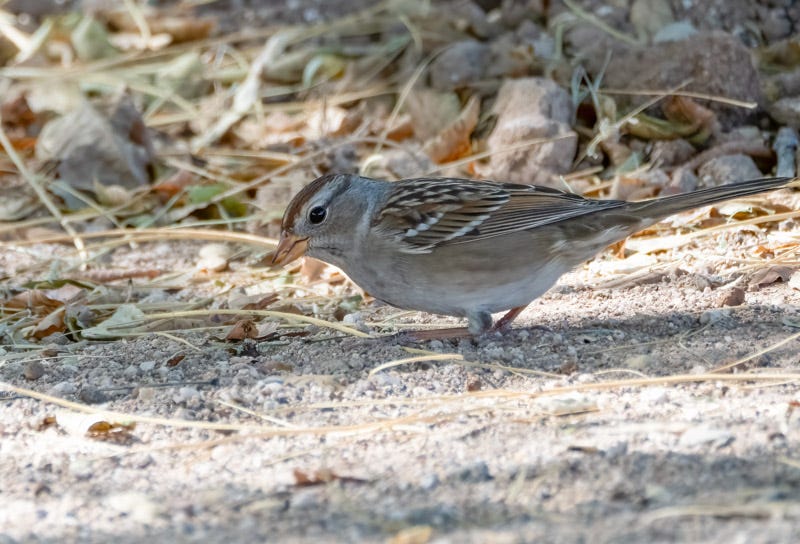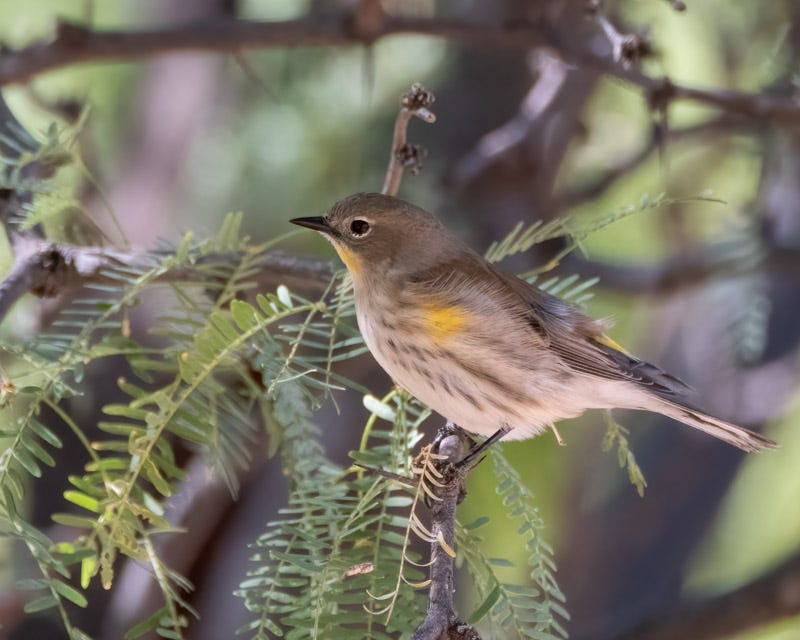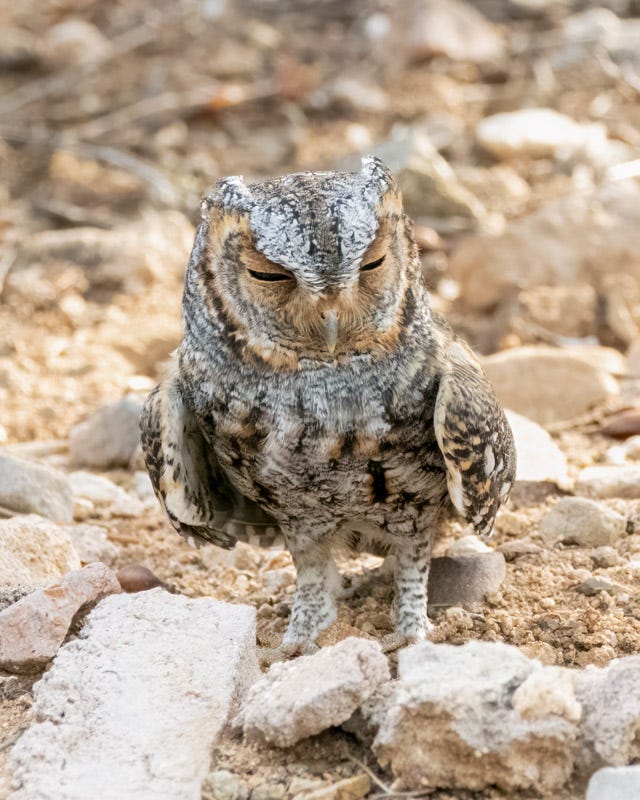Good Signs of a Migration Season
Oct. 23, 2024: Sights from a bench in a park and a special owl
In September, the influx of hummingbird numbers and species in my backyard let me know migration season was in full swing. Birds migrate primarily in the fall for better food resources. https://tinyurl.com/2s3d2xfw One of the wintering birds arriving in Tucson now in great numbers is the White-Crowned Sparrow.
"Range Maps" are commonly used to provide a quick sense of where birds can be found during different seasons. I use the range maps found on the Cornell Lab of Ornithology's allaboutbirds site. The range map below is that of the White-crowned Sparrow. Orange is a warm color, and shows where these birds can be found during the warm, summer breeding season. Blue is a cold color, and indicates where White-crowns can be found during winter. Purple is a blend of red and blue, hot and cold colors and shows where this species can be found year-round. Yellow indicates areas the bird migrates across to get to wintering or breeding grounds.
The map above indicates that we have White-Crowned Sparrows in southern Arizona during the "blue", non-breeding or winter season. Below is an immature White-crowned Sparrow. Instead of a black-striped crown on a white head, it has rusty brown stripes on a gray head. All of these birds were seen at Fort Lowell Park last week.
The sparrows were feeding on the ground in the shade of a Chinese Pistache tree. Those decorative trees are somewhat common in Tucson's urban parks. They are loaded with berries at this time of year and the White-crowns were finding the berries that had fallen on the ground.
Another bird that winters in the Tucson area is the Yellow-rumped Warbler. While they are present at higher elevations in Arizona during the summers, during the winters they come down to the desert floor and are the most common wintering warblers in Arizona.
Yellow-rumped Warblers have yellow sides, a split eye-ring and a yellow rump. Some Yellow-rumped Warblers have a yellow throat
You can get a little peek of the yellow-rump in this shot.
The next "wintering" bird that I saw appears in our deserts during the winter. The range map below is for a woodpecker called the Red-naped Sapsucker. The species name is unusual. These woodpeckers do not "suck sap". They do, however, drill a series of holes in a tree and then lap up the sap that flows out.
This Red-naped Sapsucker was in a mesquite tree next to the area where the sparrows and warblers were found. It spent the longest time moving up and down the trunk of the tree. You can see the red on its "nape", the back of its neck, for which it was named. The red on its throat lets us know this is a male woodpecker.
A week prior to visiting Fort Lowell Park, I was very excited to see a unique migrating bird. Look at its range map to see a very different kind of map. This bird species summers at high elevation forests among ponderosa pine and other large coniferous trees. Thus, we have such a scattered pattern for summer breeding season in this range map. This bird species winters in parts of Mexico and Central America (see the purple and blue areas). They migrate at nighttime.
A friend let me know she found a Flammulated Owl in a palo verde tree in her yard. These owls are smaller than Western Screech Owls. As they migrate south during the nighttime, they stop to rest during the day. By the time I got to my friend’s house, the owl had dropped down to the ground to sleep. It was one of our 100° days and the owl held its wings to the side to aid in cooling.
This little owl is perhaps six inches long. Flammulated Owls get their name from a reddish streak of feathers (not seen in my photos) on their backs and shoulders. giving them a "flaming" appearance. Flammulated is from the Latin word for flame-colored or flame-shaped.
We only watched the owl for a short time, not wanting to disturb it on its long journey. The next day my friend reported the owl had flown off. What a gift to catch a short look at this special bird.













